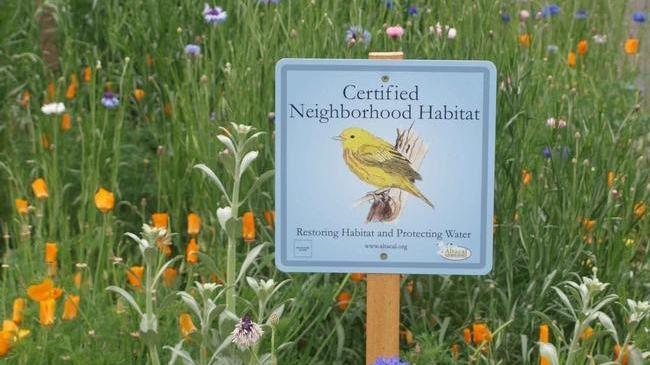How to Create & Protect Habitat for Pollinators & Other Beneficial Wildlife

Habitat gardens provide connectivity
• Your garden can be a place for pollinators and insects to stop and refuel as they travel through urban, suburban, and wildland areas.
• Ecologists refer to this as habitat connectivity or extending wildlife corridors.
What a habitat garden needs
Food
• Plants provide basic food for wildlife in the form of seeds, berries, nuts, fruits, nectar, sap, pollen, foliage, and
• Some animals become food for other animals. For example, caterpillars or insects provide nourishment for birds.
Water
• Wildlife must have water for drinking and bathing.
• A water sources may include a spring, stream, or lake.
• When natural resources are unavailable, an artificial pond, pump-driven fountain, cement birdbath, or even a depression in a stone can serve as a life-giving water source.
Shelter
• Wildlife need protection from predators and weather.
• Dense shrubs, brambles, evergreens, rock piles or walls, and wooded areas provide protection and shelter.
• A little messiness provides refuge for birds and mammals. This may include piles of branches or untrimmed shrubs around the edges of a garden.
Places for young wildlife
• Provide place for wildlife to bear and raise their young.
• Ideal locations are places predators have a hard time invading. These include mature trees, dead trees or snags, thickets or dense shrubs, wetlands, and burrows.
• If your garden does not include any of these, try home-made nesting boxes.
Sustainable gardening practices
• Use organic methods for maintaining the garden.
• Nurture soil. Add compost and other organic materials rather than synthetic fertilizer.
• Avoid toxins: chemicals from synthetic pesticides and fertilizers may harm wildlife.
